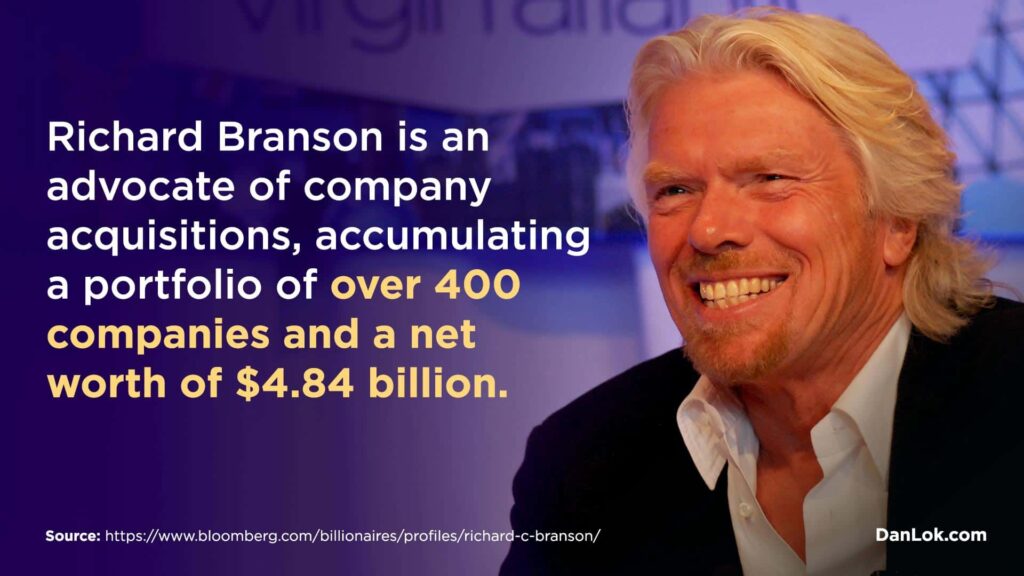You’ve invested countless hours and dollars into your business. You’ve found some success. But now you’ve plateaued.
There is a point in business where it feels impossible to break a certain marker. And it’s easy to get complacent at that point. Being an entrepreneur who is scaling an enterprise is not easy. If it was, everyone would do it. But there is a reason you’re not scaling your enterprise. And once you learn it, you will be able to overcome it and take your enterprise to the next level.
You need to operate in a Business 3.0 world.
Is your enterprise operating in a physical location? What does your online presence look like? How does your team work together? What location do they work from?
Mid-pandemic, these answers will most likely look a lot different than they did a few months ago. But the reality is that the pandemic just accelerated what was already coming.
And that is Business 3.0.
You need to learn how to operate in a Business 3.0 world as an agile organization. So you can adapt to any situation. Then, you can scale your business in the face of pandemics, world crises, and economic meltdowns.
Because the world is not a stable place.
All throughout history, there have been wars, famine, world superpowers rising and falling, technology changes, and more.
In short: there has always been uncertainty. But there have always been businesses. Some businesses have survived more than others because they learned how to adapt.
For instance, did you know Nintendo is 130 years old? They have learned how to take advantage of coming obstacles and be flexible with changes. So they survived. Before the coin was even termed, they were operating under the foundations of Business 3.0.

What Is Business 3.0?
To understand Business 3.0, you have to understand what came before it.
Business 1.0 organizations operate in traditional offices and brick and mortar retail locations. Their move towards the online world has been slow and ineffectual. Has the pandemic and impending economic downturn already killed your business? It very well could in the near future if it hasn’t already. If this is the enterprise you want to scale, you need to act fast.
Business 1.0 organizations are doomed in the coming world.
Businesses who took advantage of the early internet are also suffering. These are Business 2.0 organizations.
Did your business jump on the internet right away but is now stagnant?
Business 2.0 organizations were quick to recognize and implement trends originally but have since become bloated. They have heavy infrastructure and massive overhead costs. With these hindrances, they cannot quickly adapt to the changing world. This leaves them stuck. They often only sell to a customer once. They have difficulty acquiring new customers and clients.
Business 2.0 organizations will also suffer in the coming world.
But Business 3.0 organizations are agile. They adapt to changes and take full advantage of modern internet and technology. We’ll dive into what exactly a Business 3.0 organization looks like in a moment. But first there has to be a deep understanding of what exactly Business 3.0 is to capitalize on it.
Business 3.0 is the era of social media, the internet, technology, and international teams. From here, businesses will be able to navigate and adapt to the ever-changing world.
So what does a Business 3.0 organization look like?
A Portrait of a Business 3.0 Organization
A Business 3.0 organization is one that is constantly adapting. They stay so nimble because they avoid the bloat of high overhead costs and infrastructure. And they dive deeply into the world of technology to stay on top of the changes in the world.
These businesses use social media to their advantage. So they can drive millions of free visitors to their websites each month. They use multiple platforms and generate engaging, educational content that capitalizes on a solid content marketing plan because they recognize people do not respond to outdated marketing tactics and require a new approach.
They also realize people don’t work like they used to. So they have fully remote teams or at least have their team spread out in clusters throughout the world. To scale an enterprise, this is crucial. By keeping your team spaced out throughout the world, you will keep your team working twenty-four hours around the clock.
And this continuity of work combined with properly utilizing social media leads to regular, repeatable, and recurring revenue. Their content marketing strategy helps them remarket. So they don’t have to constantly try to gain new customers. Instead, they capitalize on relationships they’ve already built by retargeting and remarketing.
Lastly, they combine all the above best practices to create systems that allow them to scale. Largely and quickly.
When you see a Business 3.0 organization, you know it. They adapt constantly to the new world, keeping their products and services relevant.
Benefits Of Scaling Your Enterprise As A Business 3.0 Organization
Business 3.0 organizations are built to scale at a large level. You will be utilizing multiple social media channels with millions of followers. Through these platforms, you will be able to generate leads and traffic. Additionally, you can more accurately retarget and remarket to your current audience.
Most importantly, you will be able to scale your enterprise with ease because your business will be nimble, agile, and adaptable.
By operating as a Business 3.0 organization, you are designing a business built to survive. With multiple streams of marketing, less bloat, and small teams working well together, you are setting yourself up to thrive. But what is still a threat?
Poor business planning is one of the top reasons businesses fail. So you need to give yourself the tools to keep your business strong. With a solid plan on how to pivot into a Business 3.0 organization, you will be giving yourself the business plan to scale. And if you’re not sure how to go about pivoting to Business 3.0, will show you the tools to do so in a bit.
Beyond your plan, you need to make sure you have a solid team working together to execute this transition. Your team is the sum of how well your business operates. And they are a critical part of your Business 3.0 transition and operations.

Is Your Team Helping You Scale Your Business?
40 years ago, a business would post a job in the newspaper or on billboards around town. Maybe they would give the listing to a local agency. People in the surrounding areas would apply for the job. If someone from a different state or town heard about the job, they would travel to the business to interview. And if they got the job, they would relocate.
There are a few assumptions in that scenario. First, the business owner would just hope the best candidate for the job would find the listing. Second, the new employee needs to be willing to relocate. Or the business owner would have to negotiate for them to move.
But that’s not the way business has to be done in this day and age.
Even before COVID-19 required most businesses to go virtual, many organizations were already exploring the idea. These businesses were embracing Business 3.0 best practices before they were forced to. So when the unexpected happened, they were able to adapt and survive. Whereas many Business 1.0 organizations suffered or failed when faced with this pandemic.
Beyond having the flexibility to survive trying times, working with global, remote, small teams gives your organization access to talent all over the world. You are not hindered by only hiring talent from the surrounding areas or finding someone who is willing to relocate.
Additionally, having small teams worldwide increases the diversity on your team while keeping you working twenty-four hours a day. This diversity will help you avoid cultural mistakes. And having a twenty-four hour work cycle keeps your team productive.
But most importantly, your team has to work together to help you scale your enterprise with ease.
How do you know your team is working with you to scale your enterprise? There are five key points that let you know if your team is working well for you.
#1: Makes The Business Omnipresent
Consumers need to see your brand five to seven times to remember it. With the prevalence of social media, however, that number will most likely go up. Consumers are inundated with brands every single day. Each time they open their phone, they see hundreds of brands staring back at them.
So your team needs to make your business and brand omnipresent.
What does it mean to be omnipresent?
Your brand needs to be everywhere.
”If your brand is not on every social platform, adding value to people’s lives, your business will suffer. Make yourself omnipresent.” - Dan Lok Share on X
This omnipresence reinforces your brand and keeps your business at the forefront of your current customers’ minds. And retargeting is absolutely key in Business 3.0.
Why is retargeting so important?
Because acquiring new clients is somewhere between five and twenty-five times more expensive than retaining customers.
Not only will your loyal customers help you increase profits but they will give you the social proof to position your business at the top of your industry.
#2: Positions The Business Well
It is critical that your team is keeping your business omnipresent. But they also need to be positioning your business at the top of your industry.
As the executive, you have the opportunity to position yourself well. But if you put in the effort to get yourself to the top of your industry, you need your business to back you up. When someone works with your business, they need a top-of-the-industry experience.
And if you’re scaling your enterprise, then you’re going to have a team. This means working with your business is working with your team. Your clients won’t necessarily be working with you, so your team needs to represent your brand.
Thus, you need a team that is ready to position your business as you position yourself. They need to be ready to offer top-notch service and products.
Have you received consistent complaints about a certain area of your business?
Maybe this portion of the business seems small to you. So you haven’t addressed it in the past. But this gaffe could be indicative of a gap in your team. If you want to scale your enterprise, investigate why this is a recurring issue. How could you improve the process?

#3: Generates Leads
Another sign of a team that is working well for you is consistent lead generation. And a Business 3.0 team is not finding clients through old and outdated marketing techniques. Instead, they are operating and maintaining a system that consistently brings in new clients to you.
”If you want to truly scale an enterprise, your acquisition tactics have to work without you.” - Dan Lok Share on X
It may sound oxymoronic to say that your business needs to succeed without you. But if you need to have a hand in every process, your enterprise will never scale to a large level.
This is why it is crucial that your team continues to operate a system that works to bring in new leads without you. Learning to establish this system is crucial. But we’ll get to that.
#4: Closes High-Ticket Sales
Are you not only generating all the leads for your business but also closing all the high-ticket sales?
This ties closely with lead generation. An effective team is not only generating the leads but also closing them. And this is not a simple task. Not every team can do this.
But if you want to scale your enterprise, your team needs to be an expert at closing high-ticket sales.
Whether your chosen form of sales is one-to-one or one-to-many, your team needs to be effective at closing these deals without you. Once again, being too involved in every process of your business will hinder your growth.
Is your team closing effectively for you?
If this is an area where your team is suffering, you should invest in making sure you are adept at closing high-ticket sales. With this skill, you will be able to pinpoint where your closing process is suffering. You will be able to establish a closing process and team to scale your enterprise.
#5: Helps You Scale Your Enterprise With Ease Through Adaptable Practice
Finally, you need to make sure your team is helping you scale your business with ease. This may seem like the most obvious step to making sure your team is helping you scale. But it’s critical.
In a Business 3.0 world, change happens fast. Sometimes without warning. And what worked before will not work again.
Does your team cling to what used to work?
Change is hard. And not everyone is ready to embrace it. Especially not as often as is needed in a large business scaling in a Business 3.0 world.
You need a team that is ready to adapt and change. A team that will stand behind you in challenging times with recommendations on how to improve. Because they are always looking at what is to come, not dwelling on what has happened.
If you want to know if your team is helping you scale your enterprise, this is a simple but painful question you have to ask: is my team ready to change?
Are you ready to change?
Are you ready to do what it takes to scale your enterprise in a Business 3.0 world?

How Do You Learn How to Scale Your Enterprise In A Business 3.0 World?
If you are reading to scale your enterprise in a Business 3.0 world, then you’ve made the first step. You have acknowledged that something in your business needs to shift to survive, thrive, and scale.
Now, you need to take the next step. You need to learn from someone who has already done the hard part. It is crucial you find a mentor who has learned from their own experience how to scale an enterprise.
The good news is that there are entrepreneurs who have done that. And there is an entrepreneur who shares the secrets he has learned with an exclusive group of executives who are ready to scale their enterprises.
Dragon 100™ is an exclusive program run by Dan Lok that helps executives take their organization from an ordinary business to a scalable enterprise. If you are chosen to be part of this limited advisory board, you will work with other executives to build flexibility, scalability, and high profits.
This is a rare opportunity. Why? Because Dan Lok has been there. He has built empires from the ground up. And it’s not every day that an entrepreneur who is still actively building multiple enterprises shares their secrets.
But for the first time ever, this opportunity is available for applications.
So what’s stopping you?
If you have the drive to build an enterprise and the mindset to make it happen, then the only thing holding you back is the knowledge you can gain from Dan Lok in the Dragon 100™.
So take the next step in scaling your business into a flexible, adaptable Business 3.0 organization built to thrive. The future is yours for the taking.

























